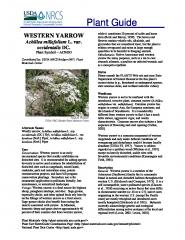Foeniculum vulgare is an evergreen Perennial growing to 1.5 m by 1 m .
It is hardy to zone 5 and is not frost tender. It is in leaf all year, in flower from August to October, and the seeds ripen from September to October. The species is hermaphrodite and is pollinated by Insects. The plant is self-fertile.
It is noted for attracting wildlife.
Suitable for: light , medium and heavy soils and prefers well-drained soil. Suitable pH: acid, neutral and basic soils. It cannot grow in the shade. It prefers dry or moist soil and can tolerate drought. The plant can tolerates strong winds but not maritime exposure.
An easily grown plant, it succeeds in most soils but prefers a sunny dry position. It grows well in sandy soils and is drought tolerant once established. Plants often self-sow freely in the garden. Plants can be grown in quite coarse grass, which can be cut annually in the autumn. Although hardy in most parts of Britain, plants are liable to die out over the winter if the soil is not well-drained or the weather is persistently cold and wet. Fennel is often cultivated in the herb garden for its edible and medicinal uses, there are some named varieties. Especially in mild winters, the leaves can be available all year round. It is best to cut a few plants back to ground level occasionally during the growing season, thus ensuring a constant supply of fresh young shoots. In a dry summer make sure that you water the cut-down clump or it might not regrow that year. Fennel is also grown commercially as a medicinal plant and for its essential oil. Fennel is in general a poor companion plant in the garden. It inhibits the growth of nearby plants, especially beans, tomatoes and kohl rabi. It is itself inhibited by wormwood and coriander. However, the flowering plant attracts beneficial insects such as bees, parasitic wasps, tachinid flies and hoverflies to the garden. The presence of these creatures will help to maintain a natural balance of insects in the garden and help prevent infestations by aphis etc. It is best not to grow fennel and dill close to each other since hybridisation can occur and the resulting seedlings will be of indeterminate flavour. The plant is heat tolerant in zones 9 through 6. .
At this temperature, many plants begin to suffer physiological damage. Heat Zones range from 1 to 12 .
For example Heat Zone. 11-1 indicates that the plant is heat tolerant in zones 11 through 1.) For polyculture design as well as the above-ground architecture information on the habit and root pattern is also useful and given here if available. The plant growth habit is a clumper with limited spread .
HabitatsMeadow
HabitatsCultivated Beds
HabitatsMeadow
HabitatsCultivated Beds
Resources
IN12000

ENY-822
Natural Enemies and Biological Control 1
Hugh A. Smith and John L. Capinera 2http://edis.ifas.ufl.edu/pdffiles/IN/IN12000.pdfIN12000IN12000
ENY-822
EDIS - Electronic Data Information Source - UF/IFAS Extension
Natural Enemies and Biological Control 1
Hugh A. Smith and John L. Capinera 2Plant Guide for Achillea millefolium var. occidentalis

Plant Guide
Plant Materials
https://plants.usda.gov/plantguide/pdf/pg_acmio.pdfPlant Guide for Achillea millefolium var. occidentalis
Plant Fact Sheet/Guide Coordination Page
National Plant Data CenterPlant Guide for Achillea millefolium var. occidentalis
Plant Guide
USDA NRCShttps://plants.usda.gov/plantguide/pdf/pg_acmio.pdf
Plant Materials
Plant Fact Sheet/Guide Coordination Page
National Plant Data Center
WESTERN YARROW
Achillea millefolium L. var.Plant Guide for Achillea millefolium var. occidentalis
Plant Guide
USDA NRCShttps://plants.usda.gov/plantguide/pdf/pg_acmio.pdf
Plant Materials
Plant Fact Sheet/Guide Coordination Page
National Plant Data Center
WESTERN YARROW
Achillea millefolium L. var.
